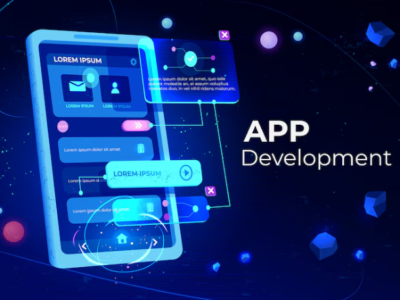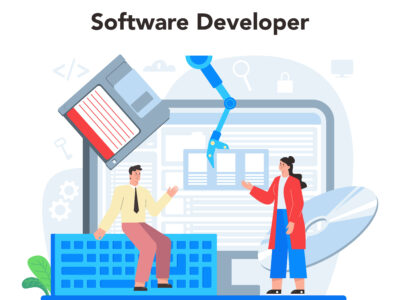Introduction
Technology has always played a pivotal role in education, continually pushing the boundaries of how students learn and engage with content. In recent years, one of the most transformative tools to enter the educational space is augmented reality (AR). By merging the digital and physical worlds, AR allows students to experience lessons in a completely new way. Instead of relying solely on textbooks, videos, or traditional teaching methods, AR introduces a hands-on, immersive approach that makes learning more interactive and memorable.
Modern augmented reality services are increasingly being adopted by educational institutions to revolutionize the traditional classroom setup. These services bring virtual objects into the real world, allowing students to visualize abstract concepts, explore complex environments, and engage in interactive learning experiences. Whether it’s a virtual science lab, a 3D model of a historical artifact, or an interactive math problem, AR can make education more engaging and effective. This technology is reshaping the educational landscape by offering students a unique opportunity to not only see information but also experience it in real time, fostering a deeper understanding of complex subjects.
Bringing Learning to Life with AR
One of the most significant benefits of augmented reality services is their ability to bring learning to life in ways that were previously unimaginable. By incorporating 3D models and interactive elements, AR allows students to dive deeper into their subjects, engaging multiple senses to create a more enriched learning environment.
- 3D Models and Visualizations: In subjects like biology, chemistry, or physics, students often struggle to grasp complex concepts that are difficult to visualize. AR changes this by offering 3D models of everything from cells and molecules to planets and stars. Instead of simply reading about these concepts, students can interact with them, manipulating 3D models to see how systems work in real time. This hands-on experience fosters a deeper understanding, making abstract concepts easier to comprehend.
- Interactive Lessons: AR transforms static lessons into dynamic, interactive experiences. For instance, students learning about ancient civilizations can use AR to walk through a virtual reconstruction of historical sites. Similarly, AR can animate the processes of the human body, showing students how organs function or how diseases spread, allowing for a more engaging and informative lesson.
- Virtual Field Trips: Field trips have long been a part of the educational experience, but they are often limited by logistics and cost. AR eliminates these barriers by offering virtual field trips. With AR, students can explore distant locations, from the Great Wall of China to the surface of Mars, without ever leaving their classroom. These immersive experiences not only make learning more engaging but also allow students to explore subjects in ways that were previously impossible.
Personalized Learning with Augmented Reality
One of the greatest strengths of AR is its ability to cater to individual learning needs. Every student learns differently, and AR services allow for personalized education that can be tailored to each student’s pace and style.
- Adaptive Learning: Augmented reality apps can be customized to adapt to the unique needs of each student. For instance, AR platforms can adjust the difficulty of tasks based on the student’s progress, ensuring that learners are always challenged but not overwhelmed. This adaptive approach allows students to move through lessons at their own pace, reviewing content they find difficult and advancing quickly through areas where they excel.
- Self-Paced Exploration: With AR, students are no longer confined to the speed of a classroom lecture. They can engage with AR content at their own pace, exploring concepts in greater detail or revisiting lessons whenever they need a refresher. This freedom empowers students to take control of their learning, deepening their understanding through repeated interactions with the material.
- Inclusive Learning: AR services are particularly beneficial for students with special needs or learning disabilities. Because AR offers a multisensory learning experience, it can help students who struggle with traditional teaching methods. For example, students with dyslexia can benefit from visual aids that help them better understand written content, while students with attention deficits may find it easier to focus on interactive lessons that hold their attention.
Enhancing Collaboration and Engagement
Collaboration is a key component of the modern educational experience, and AR services can enhance this by providing platforms where students and teachers can work together more effectively.
- Collaborative Projects: AR allows multiple students to collaborate on a project in real time, even if they are not in the same physical space. Using shared AR platforms, students can build 3D models together, work on group assignments, or explore a virtual environment as a team. This fosters teamwork, problem-solving, and communication skills, all of which are essential for success in the modern workforce.
- Increased Engagement: One of the biggest challenges teachers face is keeping students engaged, particularly in subjects that are traditionally considered “boring” or difficult. AR changes this by turning lessons into interactive experiences. Whether students are dissecting a virtual frog, building a virtual bridge, or exploring a distant planet, the immersive nature of AR captures their attention and makes learning more enjoyable. This increased engagement often leads to better retention of information and a more positive attitude toward learning.
- Teacher-Student Interaction: AR also improves the way teachers interact with students. By using AR tools, teachers can provide real-time feedback as students work through problems or interact with 3D models. AR apps can also track student progress, giving teachers valuable insights into which areas need more focus. This allows for a more personalized and responsive approach to teaching, ensuring that no student is left behind.
Real-World Applications and Skill Development
In addition to enhancing classroom learning, AR services can help students develop real-world skills that are essential for their future careers.
- Career Training Simulations: Many professions require hands-on experience that is difficult to provide in a traditional classroom setting. AR services can simulate real-world work environments, allowing students to practice skills in a safe, controlled environment. For example, medical students can use AR to practice surgical techniques, while engineering students can simulate building structures. These simulations not only give students practical experience but also help them gain confidence in their abilities before entering the workforce.
- STEM Education: Science, technology, engineering, and math (STEM) subjects are often challenging for students, but AR can make these fields more accessible. By providing interactive experiments and visualizations, AR helps students explore scientific concepts in a way that is both engaging and informative. This can inspire a passion for STEM subjects and encourage more students to pursue careers in these fields.
- Soft Skills Development: In addition to technical skills, AR can help students develop important soft skills like problem-solving, critical thinking, and teamwork. AR projects often require students to work together, think critically about how to approach a problem, and experiment with different solutions. These skills are essential in almost every career and are becoming increasingly important in today’s collaborative, technology-driven workplace.
The Future of AR in Education
As technology continues to advance, the potential for AR in education is limitless. Future AR platforms will integrate more advanced features and offer even greater opportunities for immersive learning.
- Augmented Reality in Remote Learning: As remote learning becomes more common, AR services will play a critical role in bridging the gap between physical and virtual classrooms. AR can bring interactive elements to online education, ensuring that students still receive an engaging, hands-on learning experience, even when they are not in the same room as their teachers.
- AI Integration: The future of AR in education will likely involve integration with artificial intelligence (AI). AI-driven AR platforms can provide even more personalized learning experiences, adjusting content based on each student’s strengths, weaknesses, and learning preferences. This combination of AR and AI will create more intelligent and responsive learning environments, ensuring that each student receives the support they need to succeed.
- Gamification of Learning: AR will also play a key role in the gamification of education. By incorporating game-like elements into lessons, AR can make learning more competitive and fun. Students can earn points, unlock achievements, and complete challenges as they work through educational content, turning learning into a rewarding and enjoyable experience.
Conclusion
Augmented reality services are revolutionizing the educational landscape by making learning more immersive, interactive, and personalized. From bringing complex concepts to life with 3D visualizations to enhancing collaboration and engagement in the classroom, AR is transforming how students interact with educational content. As AR technology continues to evolve, its applications in education will only expand, offering even greater opportunities for enhancing learning outcomes, developing real-world skills, and preparing students for the future. Through AR, education is not just about absorbing information—it’s about experiencing it in ways that make learning more effective and enjoyable.











